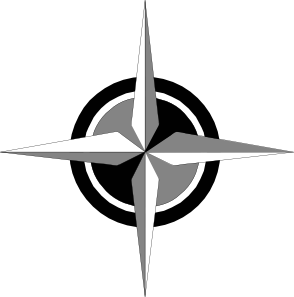Cheating
I've been asked several times if we have a problem with cheating.
There aren't many ways to cheat.
If you are giving bonuses for first at a control, then a captain could write down an earlier time than the actual time. If another team makes it to the control and is posted as being second, they will complain: There were no tracks there when they arrived. So far this has not happened.
If you suspect cheating in this form, plot distance versus time for the team's controls. It's hard to come up with a consistent lie. Another way is to give them a GPS in a sealed box. This will record their route on the next race. GPS with bread crumbs turned on will record the time and location every X minutes.
Some have said that a team might bring their own GPS. This isn't as much help as you think. If they have trouble with just map and compass, then GPS won't help them much. The intrinsic error of GPS makes short run bearings and small distances have larger errors than a compass and pace will.
If you are worried about this, you have several recourses:
Generate your map using an arbitray datum. This creates an offset. The GPS user has to figure out what the offset is, and correct for it. This is easy if you are expecting it. Record the GPS coordinates for a known landmark. Compare to the map. If you feeling really nasty, use an arbitrary datum, rotate the map, and modify the declination. This requires that the cheating team measure four points that are widely separated, and from that calculate a transform to convert from your map coords to GPS coords. To calculate the transform requires solving a system of four equations with four unknowns.
Heavy work in the field.Don't use detailed coordinates. Give your clues in the form of references to landmarks. A GPS still can be used, but the user has to still read the coordinates of the clue off the map, then enter them as a destination on the GPS.
Increase the use of Navigators -- Where you have to find one thing, then from that find another.
Tell them they can use GPSs but you won't help them use it.
Rogaine is still fun even if GPSs are used. It actually means that race setters can be more arbitrary in their locations. But it doesn't teach map reading to the same degree.
Vandalism on the course.
It's possible that a team could destroy or hide a control. This shows up in the tally when every team that comes after complains that the control wasn't there. Several of these would be suspicious.
My memory of controls I've set out is good enough that once I get close to the control, I will recall which tree it is on, and I can find the nail. The existence of tracks at the control tell me that someone was here.
So far none of these problems have occured.
The closest was one team wanted to move a bunch of deadfall close enough to the control to make seeing it difficult. The referee with the team pointed out that this was both unfair, wasn't guaranteed to work, and was costing them time they could be using to find the next control. Captain stopped. Thought for about five seconds. "You're right. Let's go."
